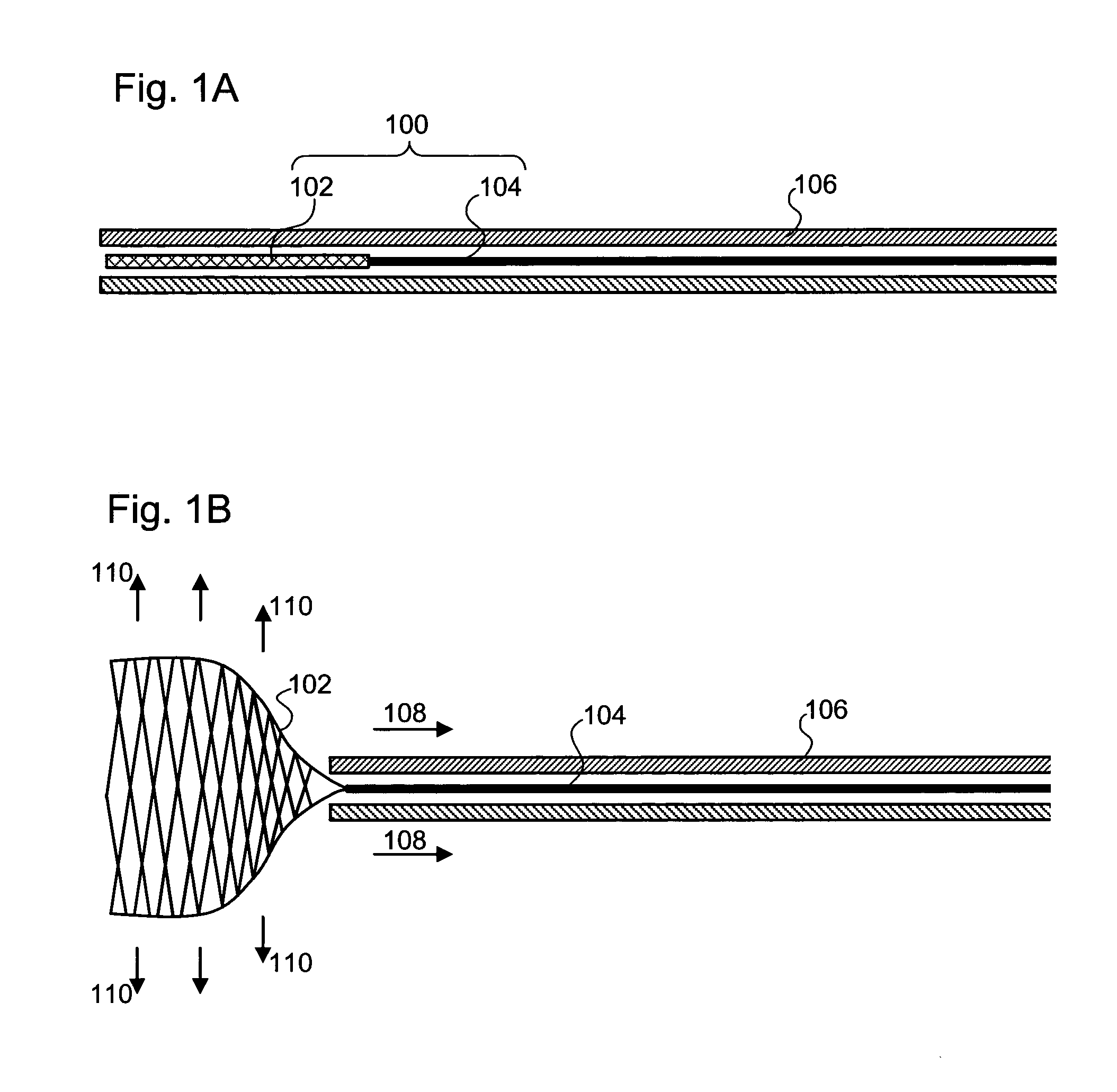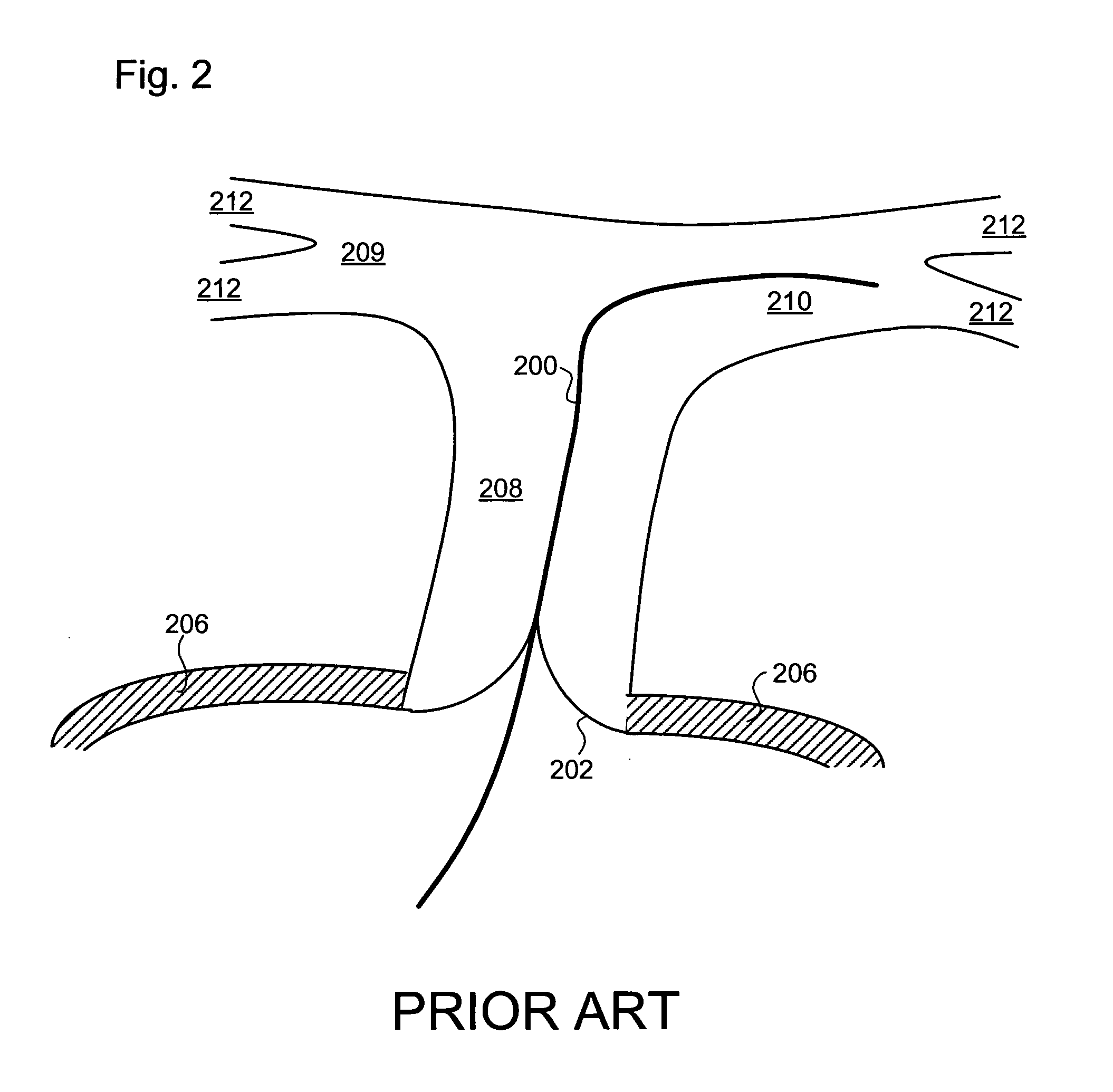Guidewire with anchor
a technology of guidewires and anchors, which is applied in the direction of guide wires, catheters, etc., can solve the problems of valve insufficiency or paravalvular leakage, large manipulation requirements, and difficulty in achieving, so as to facilitate the removal of guidewires, reduce stress, and reduce the effect of anchoring for
- Summary
- Abstract
- Description
- Claims
- Application Information
AI Technical Summary
Benefits of technology
Problems solved by technology
Method used
Image
Examples
Embodiment Construction
[0056]FIGS. 1A and 1B show an example of a guidewire 100 comprising a stem 104 and an anchor portion 102. In FIG. 1A, the guidewire is fully contained within a guidewire delivery catheter 106, which may be tubular in form, for example. The anchor 102 is radially constrained by the catheter 106, which may be desirable during an insertion phase to reduce the risk of injury or discomfort to a patient.
[0057]Once the guidewire is fully deployed within the body cavity, duct or vessel, the guidewire delivery catheter 106 can be longitudinally withdrawn (arrows 108) so as to expose the anchor 102. A guidewire 100 and catheter 106 in this configuration are shown in FIG. 1B. Being no longer radially constrained, the anchor 102 springs open (arrows 110) and can perform its function of anchoring the guidewire 100. The anchor 102 may be reversibly expandable, optionally through a plurality of cycles of expansion and retraction. This allows the anchor 102 to be removed easily and / or to be re-posi...
PUM
 Login to View More
Login to View More Abstract
Description
Claims
Application Information
 Login to View More
Login to View More - R&D
- Intellectual Property
- Life Sciences
- Materials
- Tech Scout
- Unparalleled Data Quality
- Higher Quality Content
- 60% Fewer Hallucinations
Browse by: Latest US Patents, China's latest patents, Technical Efficacy Thesaurus, Application Domain, Technology Topic, Popular Technical Reports.
© 2025 PatSnap. All rights reserved.Legal|Privacy policy|Modern Slavery Act Transparency Statement|Sitemap|About US| Contact US: help@patsnap.com



